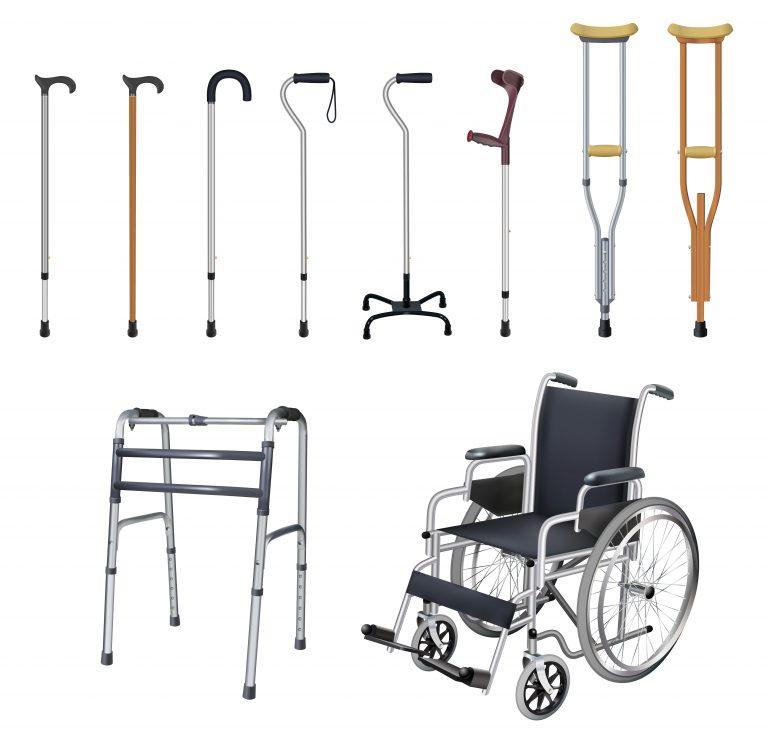Durable Medical Equipment is an important component of medical care for Injured Workers in their attempt to recover from their injuries or maintain their abilities to perform activities of daily living. This article is intended to discuss Durable Medical Equipment within the workers’ compensation system.
It is not uncommon that Injured Workers, during the course and scope of their claim, receive correspondence from the Insurance Company which has the abbreviations “DME” within it. The term “DME” refers to the term Durable Medical Equipment. Further, many Injured Workers, as part of their treatment, are prescribed Durable Medical Equipment. Sometimes, the Insurance Company approves the durable medical equipment for Injured Workers. Other times, the Insurance Company denies the provision of that equipment.
Some Durable Medical Equipment can be required by Injured Workers on a temporary basis. Some Durable Medical Equipment can be required on a permanent basis.
Durable Medical Equipment plays an important role in helping Injured Workers recover from their industrial injuries. Durable Medical Equipment can be necessary to recover from surgical procedures. Durable Medical Equipment may be necessary for use during hospitalization and for extended convalescence. For Injured Workers with Chronic Medical Conditions, Durable Medical Equipment can be necessary for continuous treatment and for the administration of medications.
For those Injured Workers who are severely disabled, Durable Medical Equipment may be important to assist them in performing activities of daily living. This Durable Medical Equipment can allow them to ambulate and perform other activities of daily living.
What Is The Authority For Durable Medical Equipment For Workers’ Compensation?
California Labor Code Section 4600(a) provides for “[m]edical, surgical, chiropractic, acupuncture, and hospital treatment, including nursing, medicines, medical and surgical supplies, crutches, and apparatuses, including orthotic and prosthetic devices and services, that is reasonably required to cure or relieve the injured worker from the effects of his or her injury shall be provided by the employer. In the case of his or her neglect or refusal reasonably to do so, the employer is liable for the reasonable expense incurred by or on behalf of the employee in providing treatment.” [emphasis added]
What are Examples of Durable Medical Equipment?
Durable Medical Equipment includes:
- Air-fluidized beds and other support surfaces
- Blood sugar monitors
- Blood sugar test strips
- Canes
- Commode chairs
- Continuous passive motion machines
- Continuous positive airway pressure devices and accessories
- Crutches
- Enteral nutritional supplies and equipment
- Glucose control solutions
- Hospital beds
- Hyperbaric oxygen therapy
- Infusion pumps and supplies
- Lancet devices and lancets
- Nebulizers and nebulizer medications
- Oxygen equipment and accessories
- Patient lifts
- Suction pumps
- Traction equipment
- Walkers
- Wheelchairs
- Scooters.
What are examples of Durable Medical Equipment within Workers’ Compensation?
Durable Medical Equipment is provided for many reasons within workers’ compensation. Frequently, when Injured Workers have surgery, they are provided such items as commode chairs, canes, and walkers. For people with chronic conditions such as hypertension or diabetes, they are provided blood pressure monitors and diabetic test strips which are provided on a permanent basis. With respect to severely permanently disabled workers, items such as hospital beds, wheelchairs, scooters, and lift devices may be provided.
Can there be problems within Workers’ Compensation obtaining Durable Medical Equipment?
Yes. All medical treatment within workers’ compensation is subject to both Utilization Review and Independent Medical Review. Doctors are required to provide a “Request for Authorization” for such equipment. The Insurance Companies are allowed to review the “Request for Authorization” and either approve it or send the request to Utilization Review. If the item is denied by Utilization Review, the Injured Worker is entitled to seek an Independent Medical Review of the Utilization Review Determination.
Can Durable Medical Equipment Impact One’s Whole Person Impairment And Permanent Disability?
Yes. There are certain provisions of the AMA Guides to the Evaluation of Permanent Impairment, Fifth Edition, in which impairment is based upon the employment of Durable Medical Equipment.
One example of the impact of Durable Medical Equipment on Permanent Disability is with respect to lower extremity injuries such as to the hip, knee or foot. For lower extremity injuries, the use of assistive devices in ambulation can be a factor in assessing a level of impairment. Per the AMA Guides to the Evaluation of Permanent Impairment, Fifth Edition, Whole Person Impairment ratings can be based upon the use of a cane(s), short leg brace, a crutch(es), long leg brace, and use of a wheelchair. See Page 529, Table 17-5.
Has There Been Any Caselaw Concerning Durable Medical Equipment?
Yes. There has been considerable reporting of case law decisions on DMEs. The general issues for DMEs are essentially the Injured Worker’s entitlement to the DME and the reimbursement for the DME from a provider. For Injured Workers, these cases are interesting because they discuss a large variety of DMEs that are available to injured workers. Within the cases, there are DMEs which serve many purposes. These include post-operative care needs as well as continuing care needs.
Further, legal reporting services also report on IMR decisions as well.
In Ocean View School District vs. WCAB (2007) 72 C.C.C. 1683 (writ denied), an Insurance Carrier was ordered to pay for DMEs which involved a rechargeable IPG battery. In Dubon v. World Restoration (2014) 79 C.C.C. 1298 (Panel Decision), there were issues discussed of how a surgery allowed for certification of approval of some DME including a post-op use of LSO [lumbosacral orthotic] brace, DME [ durable medical equipment] purchase elevated toilet seat, DME purchase front wheeled walker, [and] DME bone growth stimulator.” In the case, there was no authorization of a “[t]hermo cool unit post-op, DME grabber, combo care 4 stim unit, and “DVT [deep vein thrombosis] Max Unit.”
Where Can I Get Advice?
If you would like a free consultation regarding your workers’ compensation claim, please contact the Law Offices of Edward J. Singer, a Professional Law Corporation. They have been helping people in Central and Southern California deal with their worker’s compensation cases for 26 years. Contact us today for more information.



